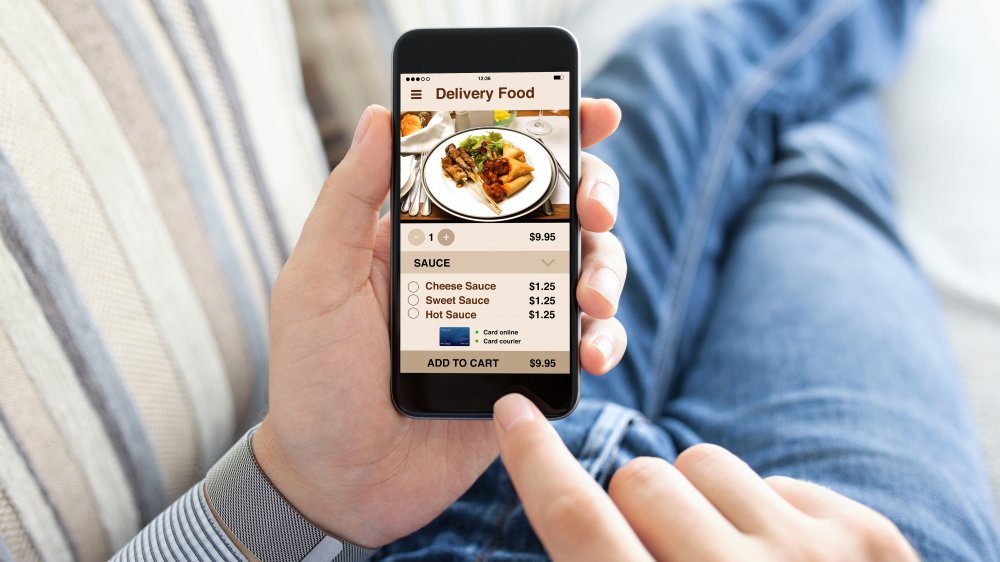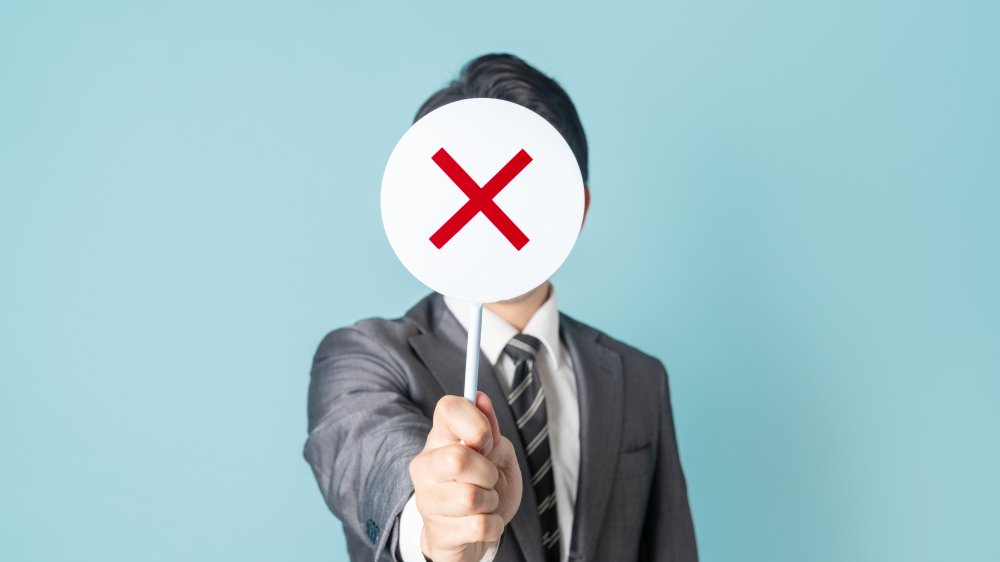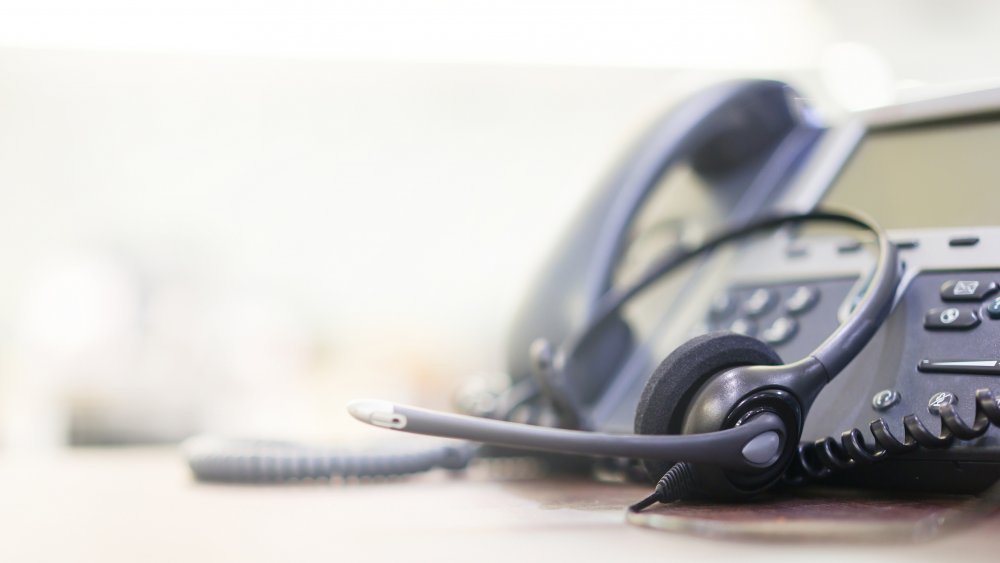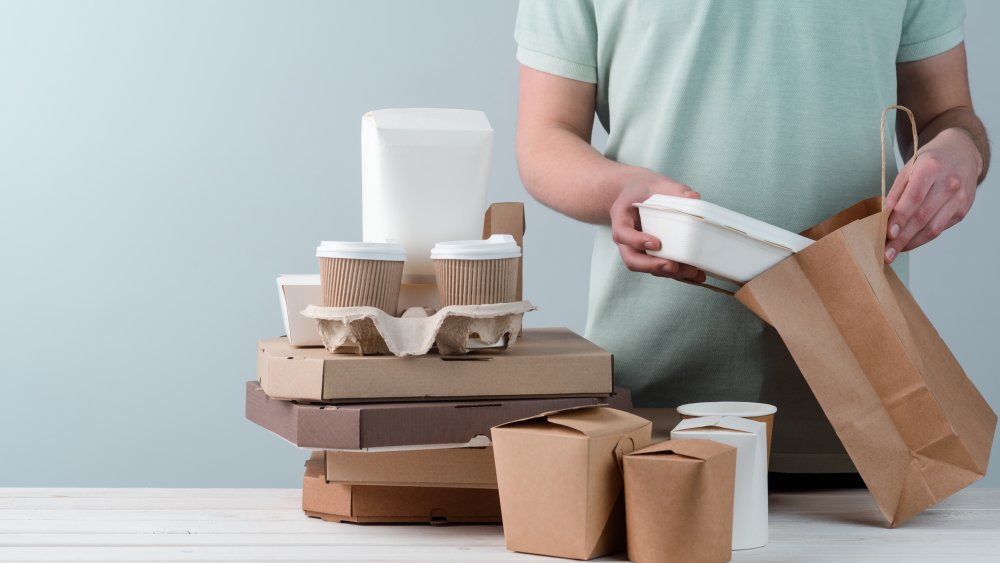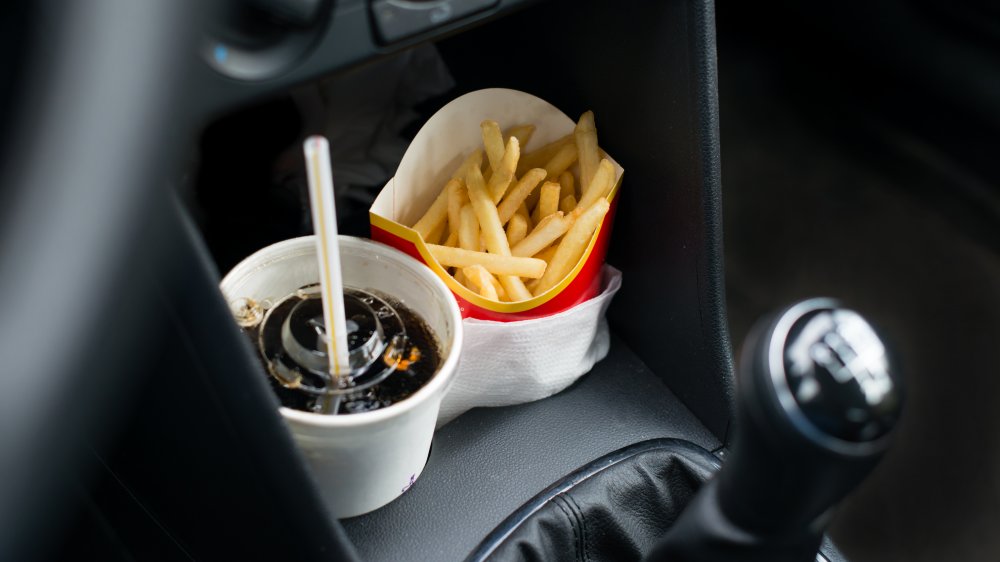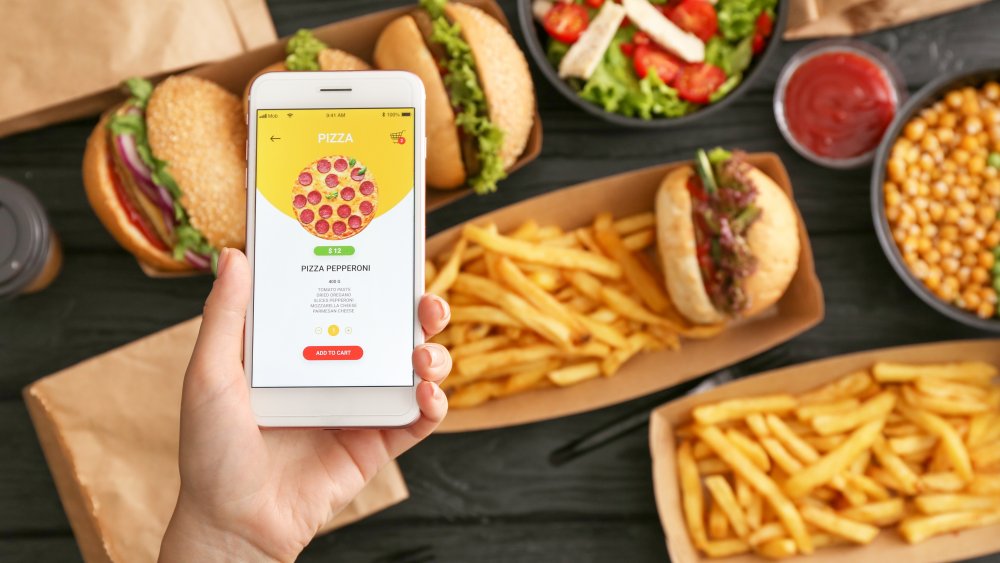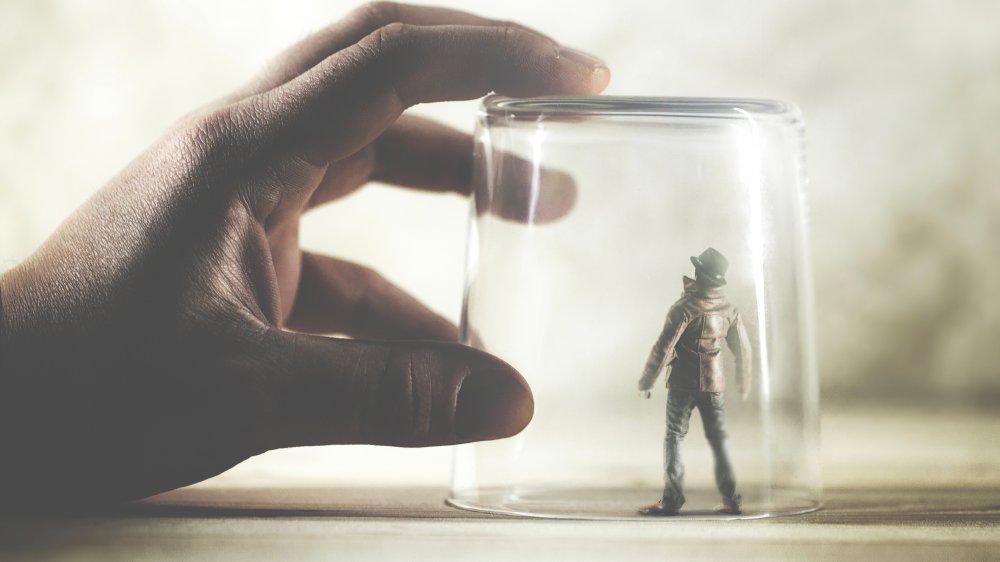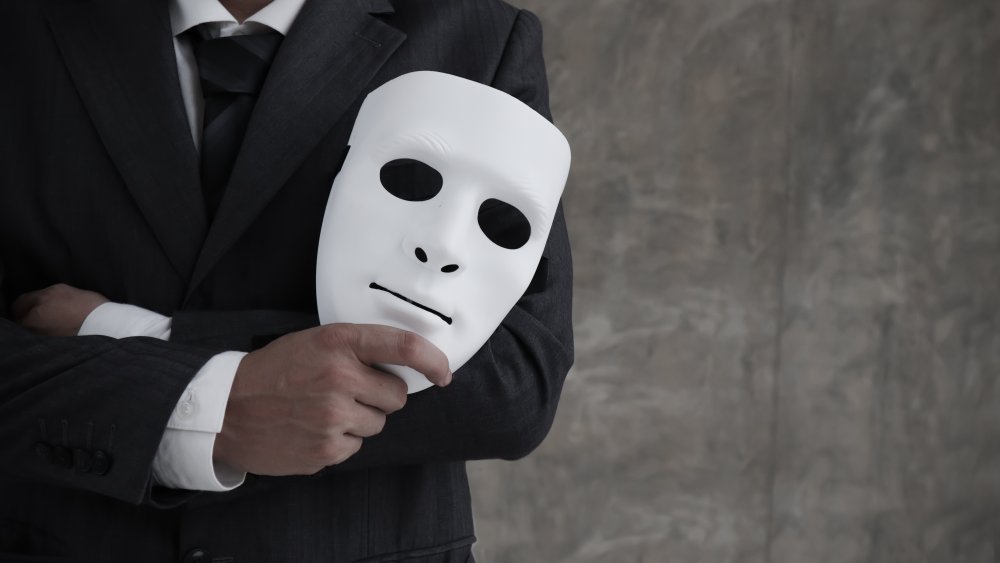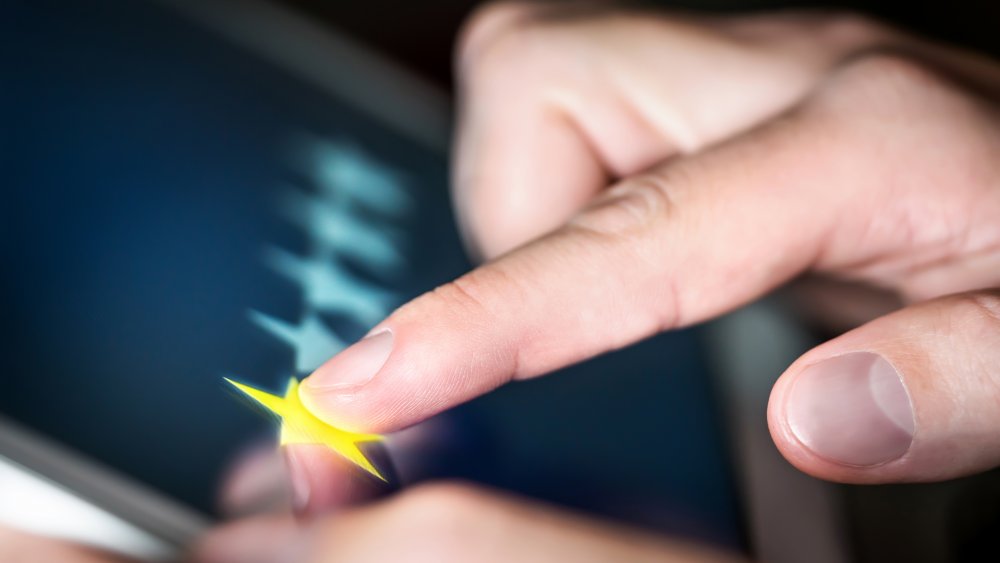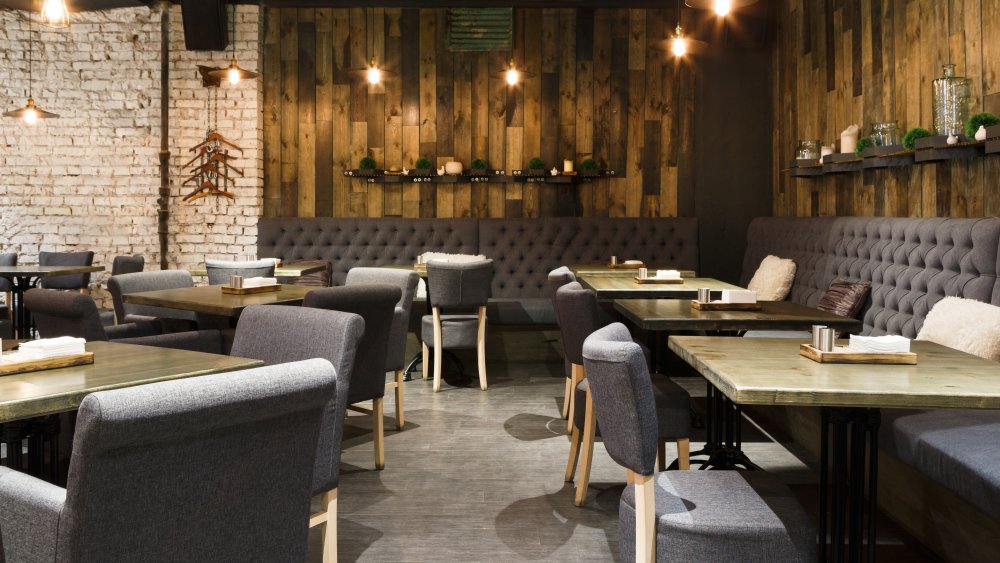How The Food Apps Are Scamming Restaurants
There are countless food apps out there, some with very unique purposes such as to check if a watermelon is ripe enough or get cocktail recommendations based on what's in your pantry. However, what remains undeniably popular are the food delivery apps that contribute to the $350 billion U.S. restaurant industry.
Food delivery apps have made our lives easier (9 in 10 users said so, according to a 2016 study) for sure, but have they also made it easier for all restaurants? Apparently not. As it turns out, several restaurants are struggling to make their ends meet because of the commissions that they are having to pay to the third-party apps which charge anywhere between 20 to 30 percent commission for each order. This weighs down hard on restaurants that have profit margins of 10 percent, as 90 percent of the money that comes in goes into labor, food, and rent.
For Mulberry and Vine, a fast-casual restaurant chain in New York City, the shift towards delivery shrunk their overall profit margin by a third, according to the owner Michelle Gauthier. Gauthier told The New Yorker: "I think we are losing money on delivery orders, or best-case scenario, breaking even." Besides the whopping commission, restaurants also find themselves entangled in scams that manifest through the many billion-dollar food apps.
Some food apps list restaurants without their permission
Restaurants are having a hard time digesting the fact that food delivery apps find it okay to list them on their platforms without asking permission first. The Los Angeles Times reported that Andrew Muñoz, the owner of a smoked meat pop-up called Moo's Craft Barbecue, in East LA, was shocked to see his restaurant listed on Grubhub. What was more shocking was that it was listed as open to orders every day of the week, when his store was not open to takeout, and not open on any day except Sundays, and for special events.
Restaurants that have a high-demand are often added to the food delivery platforms without permission and are unaware that orders are being made through a third-party app. As reported by SF Chronicle, this is exactly what happened with Michelin star-winning Thai restaurant Kin Khao in San Francisco. The restaurant doesn't do food delivery and manager Pim Techamuanvivit only learned that they were on Seamless when she got a call from a customer inquiring about an order that was made through the app.
To make matters worse, menus listed on the apps may be incorrect, which often leads to confusion among the restaurant owners, couriers, and customers; and puts the restaurant at risk of getting consumer complaints and negative reviews.
Some apps slap bogus phone charges on restaurants
When a restaurant gets into a partnership with Grubhub, the app owns the rights to create microsites that look like, and have the same content as the restaurant's original website. As of June 2019, the company has registered more than 23,000 web domains (via The Counter). The phone number listed on the new site created by the app is not the restaurant's actual number, though. It is Grubhub's number, which when a customer calls, is redirected to the restaurant. The company gets a marketing commission, even if the call did not lead to an order.
The New York Post reports that an Italian restaurant in Brooklyn was charged $9.07 by Grubhub for answering a customer's phone query of whether gluten-free pasta was available at the eatery. Another Mediterranean restaurant in Manhattan was charged $9 by Grubhub for informing a customer who called that the restaurant was closed. Restaurants have complained that the food delivery giant has been charging them for calls that involve general questions, dinner reservations, complaints about food, and even phone calls that went to voicemail!
According to Eater, Grubhub uses an algorithm to determine whether or not the call leads to a food order. These recordings are made available to restaurant owners, but the algorithm is far from perfect and numerous restaurants have discovered erroneous charges. For example, in June 2019, Grubhub ended up refunding $10,000 to a New York restaurateur who accused them of charging bogus fees.
Restaurants are left with wasted meals when couriers don't show up
As a customer, it can be confusing and annoying when you haven't got your food order, though the app says it is delivered. Imagine if you are a restaurant owner and you get an order through a third-party app. You have it ready to go, but you get a notification that says the food is already delivered. That's confusing of course, but also a waste of time, money, and resources for the restaurant.
In April 2020, Leo Grandevouz, an Italian restaurant in Hoboken, was left with $500 worth of undelivered orders, reports Pix 11. The orders were made via Grubhub but never picked up by the driver. However, the restaurant received a notification saying the food was delivered. As it turns out, the driver accepted the assignment, but without stepping into the restaurant, marked it complete, bagging the delivery fee and the tip. And Grubhub, as per rules, wasn't able to send another driver as the order was already marked complete. This left the restaurant with all the perishable food, and no order. Leo Grandevouz' was not a one-off case, either. Jersey City restaurant Wurstbar, took to Reddit to talk about a similar scam, where Grubhub drivers signed up to take orders (not once, not twice, but 10 times!) but never showed up. "We wasted so much food that was never being picked up," the post read.
Food is sometimes tampered with during delivery
Once the food leaves the restaurant premises through a third-party delivery service, the restaurant doesn't have much control over preventing contamination or a loss in quantity. In 2019, US Foods surveyed 497 American adults who identified themselves as food deliverers for at least one app. They found, quite shockingly, that 28 percent of the drivers had taken food from an order. UberEats driver Neftaly Gonzalez told CBS Local that he had "seen a few people take a couple of fries off the top, and then roll the bag up". While this may seem extremely gross for a customer, for the restaurant, it puts their reputation in jeopardy.
It is not mandatory for all food delivery drivers to have food handler permits (usually given to those who work in a food establishment and handle unpackaged food) and the rules vary with each State. For example, Washington restaurateurs only employ drivers who have the food handler's permits, whereas, in California, this isn't the case (via Eater). So who do the customers blame if there is something wrong with their food? According to a 2019 study by Zion and Zion, a market research firm, 61.7 percent of the customers blame both the restaurant and the food delivery app. This seems fair if both the restaurant and the delivery company were united as a team, but in some cases, restaurants are left with limited choice but to deliver through the delivery apps.
Incorrect menus on food apps cost restaurants money and time
Though Baology, a Taiwanese restaurant based in Philadelphia, has only registered in the food app Caviar, it found itself listed on DoorDash and Grubhub without permission. Moreover, the menu posted on DoorDash was incorrect, reports Philly Mag. Similarly, Sate Kampar, a Malaysian restaurant in Philadelphia, also found itself listed on DoorDash, Grubhub, and another fake site, with a menu that showed the prices to be lower than what it was at the restaurant. Owner Ange Branca told Philly Mag that couriers who come to the restaurant to pick up the orders refuse to pay the correct price stating that the ones mentioned on DoorDash were lower.
An incorrect menu not only means time wasted for a restaurant, but also a loss of money and a botched chance to win over new customers. When Indonesian restaurant Hardena made a request with Postmates to update their incorrect menu (listed without permission) that reflected prices from two decades ago, the food app said it was only possible if Hardena applied to be a partner with Postmates. In January 2020, Grubhub — which partnered with Yelp in 2017 – announced that non-partner restaurants could reach out to the company if they need to change their menu, hours, or be removed from the platform.
Opting out of certain food apps is next to impossible for restaurants
When restaurant owners find that their establishments are listed on food delivery platforms and want to opt out of the service, it's more than a call or click's work. The restaurant owners have to fill out an online form, and then wait for anywhere between 48 to 72 hours to see the restaurant's name unlisted. This can be frustrating for those who hadn't given their consent to be part of the listing in the first place, LA Times reports. With food delivery app Postmates, it is even more challenging.
Postmates partners with Foursquare, a search and discovery mobile app, to help customers find the restaurant they want to order from. Customers can either search on Foursquare or directly feed in the address of the restaurant. Once the address is in, Anand Dass, Postmates's director of Business Development says, it is not within the company's hands to delete it, and even if they did, the customer would put it right back in (via Eater). This is challenging for restaurants like Seattle-based Lost Lake, whose owner David Meinert told Eater "we choose not to do delivery [there], as some of our food items don't hold up well in a container over time." Many restaurants such as Lost Lake have been unable to get out of the platform.
It is easy to start a fake restaurant on a food app
London-based Josh Pieters, a leading Youtuber known for his prank videos, started a fake restaurant called The Italian Stallion and registered it on the food delivery platform Deliveroo, in 2019. He created a website and social media accounts for his fake restaurant which he registered as an official company "The Italian Stallion Ltd", and posted his apartment building address as the official restaurant address. His restaurant was listed on Deliveroo without any hygiene check. In fact, Insider reports that Pieters had reality TV star Gemma Collins as the head chef, and an Airpod displayed as feta cheese on his restaurant's website.
Similarly, in 2017, Oobah Butler started a fake restaurant in her shed and made it the top-ranked one in London on TripAdvisor by simply writing convincing fake reviews. And to top it all, in 2019 BBC (yes, the broadcasting company) opened a fake restaurant and sold burgers out of their small London front yard, through Uber Eats. They called it 'Best Burger Corporation'. They did not have a Council Hygiene Rating or an identity check before being able to sell, reports Food & Wine. The fact that one can create a fake restaurant this easy, casts concern on the minimum standards set by the apps and on the ease at which they can facilitate illegitimate establishments to compete with the legit ones.
Fake reviews on food apps can affect a restaurant's reputation
If you are like the majority in the U.S. (94 percent) who rely on online reviews to decide which restaurant to choose, your decision is probably being manipulated by a bunch of fake reviews. In 2020, Yelp closed 550 of its user accounts after it realized they were spewing fraudulent reviews on the internet (via The Verge). Yelp, which gets 184 million unique visitors per month, and on which 45 percent of customers rely on before visiting a business, is trying its best to weed out the fake reviews. In fact, it splashed a warning on all the Burgerim franchise pages after it found out that the franchise was "offering up cash, discounts, gift certificates, or other incentives in exchange for reviews about the business," reports Restaurant Business. Meanwhile, on Trip Advisor, which gets 50 million monthly users in Britain, a third of the reviews are fake, according to a report published in 2019 by The Times.
How do fake reviews impact restaurants? A 2018 report in The New Yorker states that those establishments which adopt review brushing (a process where owners of establishments pay people to write positive reviews for them and negative reviews for their competitors) can increase their reputation 10 times faster than those who don't! What's more, a single star increase on Yelp can increase the revenue of restaurants by up to nine percent, reports Review 42.
Fake reservations made on food apps cost restaurants thousands of dollars
There are several apps (think OpenTable, Reserve, Yelp, BigDish, Tock, etc) out there that partner with restaurants to let you reserve a table. While this is a boon for customers, for restaurants, no-shows cost restaurants money. In 2018, 45 Chicago restaurants who had partnered with Reserve to accept customer reservations, saw hundreds of no shows in the duration of three months. It was found that an ex-OpenTable employee was booking several tables under fake email IDs at restaurants that specifically used the rival platform Reserve, reports Eater Chicago. The ex-employee started making fake reservations in December, a scheme that went on till February, peaking during Valentine's Day when restaurants see a high demand for reservations. That was when Reserve noticed, for the first time some, fraudulent activity in their system.
Several restaurants face the challenge of dealing with no-shows: like the restaurant wd~50 that saw 25 no shows one night, and Tickets in Barcelona which had to deal with 10 to 15 no-shows a day. The owner of wd~50 tells Eater, "while other industries — airlines, dentists and even the spa — have legal recourse to recoup no-show losses, the restaurant industry has very little legal recourse."
